To illustrate the wide variety of British wild orchids...
![]()
Orchids have fascinated both botanists and lay-people for many hundreds of years and it is not difficult to see why. Their enigmatic life cycle, beautiful flower-spikes and fanciful likeness to other creatures have made them the subject of study of many of the foremost naturalists (including Darwin).
These days many peoples' exposure to orchids is restricted to house or exhibition specimens. It is true that, in general, their wild British cousins are much less 'showy' and smaller in stature. However, this does not detract from their innate beauty or the pleasure in finding these plants in their natural environs.
10 species. Generally tall with few, widely spaced flowers. Two sub-tribes: Cephalantherinae and Epipactinae.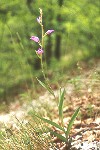
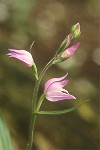
This close-up shows the almost tubular shape of the flowers that characterise the Cephalanthera family. The lowest flower is at its most open and the yellow tinged lip can be seen.
This shot was taken at a Buckinghamshire site in mid-June under a dense beech canopy.
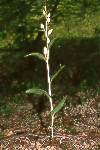
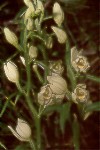
This close-up of the flower heads of three plants shows flowers at different stages of opening. In common with most orchids, the flowers mature from the bottom, hence the lowest ones open first (and generally set seed first). The right-hand plant has most of its flowers open to their full extent and the yellow markings of the lip (labellum) can be clearly seen.
This shot was taken in the Causse region of France at the end of May.
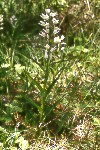
This photograph was taken in the Causse region of France, at the end of May, where the orchid is a relatively common inhabitant of the woodland scrub.

This specimen was photographed at the marshy outflow of Lake Annecy in Alpine France in early July.
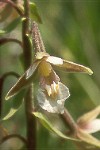
This close-up of a single flower from the same plant shows the intricate structure of the lip (labellum) including the pink striated upper section.
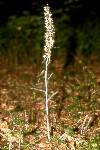
This photo was taken in mid-August at a Chiltern nature reserve in Oxfordshire and gives an impression of the deep shade that this species can tolerate (and even favours!).
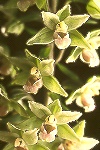
Although the flower is predominantly green, it does have an attractive pale pinkish-brown lip. The 'violet' of the plant's name refers to its tendency to have a variable degree of fine violet suffusing of its stem and leaves.
Not represented: Broad-leaved Helleborine, Dune Helleborine, Dark Red Helleborine, Green-leaved Helleborine and Pendulous-flowered Helleborine
Four species represented by the genus Ophrys. The flowers mimic specific insects (usually solitary wasps) and rely, to varying degrees, on pseudo-copulation to achieve fertilisation.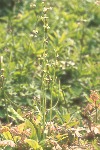
This shot shows several flower-spikes, apparently from the same plant. It was taken at a Kent nature reserve at the end of May. This plant was one of several that had exploited a patch of land that had been cleared the previous winter. Although the Fly Orchid can tolerate quite dense shade, it does particularly well under such conditions and will flourish until other flora becomes established and out-competes it for light.
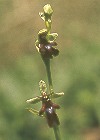
The insect mimicry is achieved by: wire-like upper petals that resemble antennae, a band of iridescent blue that mimics the blue sheen of a fly's wings when they catch the light and two dark glistening patches under the "antennae" that resemble eyes.
The yellow "eyes" are the pollinia - waxy globules of pollen. It is a feature of orchids that their pollen is always in this form - it is never in a free, powdery state that can be picked-up by pollinators such as honey bees. Instead all orchids rely on the pollinia becoming attached to the heads (usually) of visiting insects, the base of the pollinia being very sticky. The pollen is then rubbed off onto the stigma when the insect visits another flower, thus achieving fertilisation.
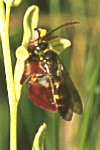 Here a male wasp is visiting a flower. The wasp is most likely to be of the species Gorytes mystaceus. The wasps attempt to copulate with the flower but this behaviour ceases once female wasps emerge (as is common with such solitary species the male wasps emerge some time earlier than the female).
Here a male wasp is visiting a flower. The wasp is most likely to be of the species Gorytes mystaceus. The wasps attempt to copulate with the flower but this behaviour ceases once female wasps emerge (as is common with such solitary species the male wasps emerge some time earlier than the female).
This shot was taken in mid-June in a Buckinghamshire nature reserve.
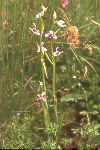
This group was taken at the end of May in the Cevennes region of France.
The next sequence of shots illustrates the variable nature of the flower particularly in the shape and patterning of the lip.
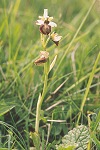
It is far less showy than the Bee Orchid and smaller in stature; most of the flower being green and brown and typically reaching only four inches in height.
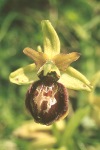
This close-up illustrates one of its distinguishing characteristics - that of a capital 'H' on its lip. This has a bluish metallic lustre when the flowers are at their best but fades to a silver as the flowers age.
Both shots were taken at a Kent nature reserve at the end of May.
Not represented: Late Spider Orchid
![]()
Ó
Copyright Paul Nielsen 1997-2013